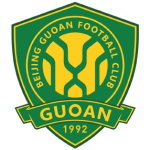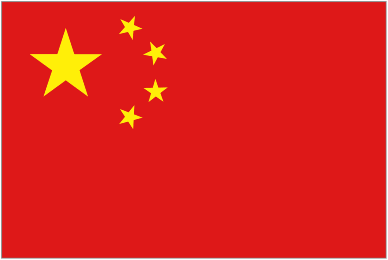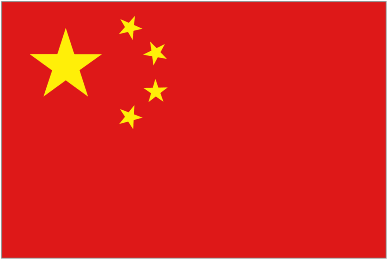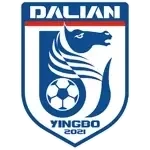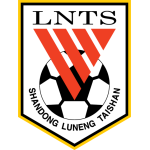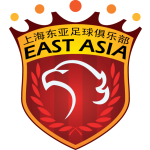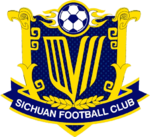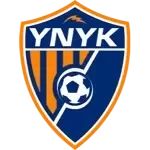Chinese Football Teams: Complete Guide to Chinese Super League, League One and Women’s Super League Teams (2025)
Chinese Football has experienced an unheard transition, which has become one of the significant sporting events that has gained national attention in the country. Chinese football teams rapidly register impressive progress due to the robust support of the national government, grand vision of development, and investment of other nations, as well as capital. Chinese Super League clubs have now become household names and include Shanghai Port and Beijing Guoan, as well as the developmental league China League One, to develop the future stars.
At the same time, the Chinese women football clubs of the Women's Super League are also becoming popular, which support gender equality and sporting perfection. Chinese football teams are not waiting to compete, nor are they waiting around in the background, looking on but instead, they are on their way to the new young football culture. With the country pursuing infrastructure development and talent, Chinese football teams are ready to make their mark at home and internationally.
Chinese Football Clubs: History and Evolution of Football Clubs in China
The history of Chinese football teams revolves around lust, expansion, and change. Football activity in China started in the first part of the 20th century, when local and regional clubs were established in such cities as Shanghai and Beijing. It was, however, during the 90s that professional football saw the light of day through the formation of the Jia-A League. This cleared the path to the establishment of the Chinese Super League (CSL) in 2004, which represented the watershed of Chinese football clubs' development. The CSL, since then, has expanded steadily due to foreign investment, big-name signings such as Oscar and Paulinho, and the government's push to see the sport at its highest levels.
Improved youth development systems and infrastructure have also favored the China football teams. The government of China has a long-term strategic projection to be a global powerhouse in the game of football, thus providing higher encouragement both in the local leagues and in the international partnerships. Nowadays, the Chinese football clubs are playing with the local pride and international aspiration, and the China football teams are still developing with the interests of fans worldwide, forming the national identity in this sporting field.
Chinese Football League System
A football league system is a football system featuring a set of leagues that are hierarchical in the sense that each year, clubs can move up or down their league. This system is highly important for the future of Chinese football clubs in China. It has three major tiers with the Chinese Super League (CSL) as the topmost, followed by China League One and China League Two. Contrary to the franchise model used in the U.S, the Chinese model is of a promotion-relegation format reminiscent of that in Europe, where competitive integrity and growth are promoted. This system enables the successful china football clubs to make their way to the top, whereas the clubs that are not performing well are relegated.
Therefore, there is always the challenge among Chinese football clubs to strive to be better on and off the pitch as they invest in youth players, stadiums, and professionals. Though the Chinese format is based on foreign models, the league system is also coloured with localism and the desire of the government to develop the sport professionally. Finally, the tiered structure creates a healthy competition and a healthy development of clubs, with the possibility of having a vibrant and progressive football ecosystem in the country.
Chinese Football Pyramid
The Chinese football pyramid is a system consisting of levels that ensures the organisation of professional football in China, with the competitive advancement and evolution of the sport. The highest level of the football pyramid in China is the Chinese Super League (CSL), which hosts the most elite clubs of the country. Under it is China League One, then comes China League Two, and then the semi-professional and the regional leagues, which form the lower tier of the pyramid. Movement between these divisions is subject to seasonal performance, with promotion and relegation between divisions being subject to end-of-season performance, where the best-placed teams in each division are promoted to the next highest division and the worst-placed teams demoted to the next lowest division.
This dynamic framework is promoting maintenance of performance and long-term planning among the clubs. Similar to the men's system is the Chinese Women's Super League, which constitutes the bottom of the Chinese female football pyramid. It is critical to guide the shaping of female talent and the growth of the sport in the country. Besides maintaining a competitive balance, the Chinese football pyramid is advantageous as it promotes the overall development of football infrastructure, grassroots programs, and professional clubs throughout the country.
Most Successful Chinese Football Teams
Some of the teams of football players in China have emerged to prominence over the years with a continuity of success in both the local matches and internationally. Such clubs have reached heights by attaining a high number of Chinese Super League titles, Chinese FA Cups, and remarkable campaigns in the AFC Champions League. Teams such as Guangzhou FC and Shandong Taishan have become household names and are praised for their fact that they dominance and contribution towards the development of football in the country. The success of these Chinese football teams is not solely evaluated based on titles that they have earned, but also through their effect on the fan culture, development of youth, and the reputation of Chinese football overall. The 10 most successful Chinese football teams in terms of the possession of major trophies are as shown below:
| Team Name | Founded | Major Trophies Won |
|---|---|---|
| Guangzhou FC | 1954 | 20 |
| Shandong Taishan | 1956 | 17 |
| Dalian Shide (defunct) | 1983 | 16 |
| Beijing Guoan | 1951 | 9 |
| Shanghai Shenhua | 1951 | 8 |
| Tianjin Jinmen Tiger | 1951 | 5 |
| Jiangsu FC (defunct) | 1994 | 4 |
| Shanghai Port | 2005 | 4 |
| Shenzhen FC | 1994 | 3 |
| Wuhan Three Towns | 2013 | 2 |
Chinese Super League Teams
The Chinese Super League (CSL) is the top division of professional football in China, which was founded in 2004. Hosting home and overseas players, the CSL has had a central role to play in the development of Chinese Super League clubs and Chinese Super League teams, as it has increased the competition and the exposure. Such Chinese Super League teams are now the biggest profile proponents of Chinese football ambitions as they mix domestic talent with blockbuster foreign transfers. The clubs in the Chinese Super Leagues motivate fans, yield more sponsorships, and incubate talents. The league will consist of 16 clubs playing at the top of the football pyramid in the country in 2025.
| Team Name | City | Founded | Home Stadium |
|---|---|---|---|
| Beijing Guoan | Beijing | 1992 | Workers’ Stadium (68,000) |
| Changchun Yatai | Changchun | — | Changchun Stadium (41,638) |
| Chengdu Rongcheng | Chengdu | — | Phoenix Hill Football Stadium (50,695) |
| Dalian Yingbo | Dalian | — | Dalian Suoyuwan Football Stadium |
| Henan Songshan Longmen | Zhengzhou | — | Hanghai Stadium (29,860) |
| Meizhou Hakka | Meizhou (Wuhua) | — | Huitang Stadium (27,000) |
| Qingdao Hainiu | Qingdao | — | Qingdao Youth Football Stadium (50,000) |
| Qingdao West Coast | Qingdao | — | University City Sports Center (27,000) |
| Shandong Taishan | Jinan | — | Jinan Olympic Sports Center (56,808) |
| Shanghai Port | Shanghai | — | Pudong Football Stadium (37,000) |
| Shanghai Shenhua | Shanghai | — | Shanghai Stadium (71,066) |
| Shenzhen Peng City | Shenzhen | 2017 (relocated 2024) | Shenzhen Stadium (45,000) |
| Tianjin Jinmen Tiger | Tianjin | — | TEDA Soccer Stadium (36,390) |
| Wuhan Three Towns | Wuhan | — | Wuhan Sports Center (56,201) |
| Yunnan Yukun | Yuxi, Yunnan | — | Yuxi Plateau Sports Center (30,300) |
| Zhejiang Professional | Hangzhou | — | Huanglong Sports Center Stadium (51,971) |
China League One Teams
The Chinese football league system is in two divisions, where China League One is the second division located right beneath the Chinese Super League. It acts as an extremely important interface: the best of the clubs are promoted to the CSL and the bottom clubs relegated to League Two. According to this promotion and relegation system, there is dynamic competition as well as development at all levels. The league also has an important role in grooming the dreamy Chinese football professionals, particularly the China League One teams, which serve as feeding teams to the young talents and aspiring heroes in the field. The structure also maintains Chinese League One clubs as they have been driven to devote infrastructure, coaching, and youth development.
| Team Name | City | Founded | Home Stadium |
|---|---|---|---|
| Liaoning Tieren | Shenyang | 2020 | Shenyang Olympic Sports Centre Stadium (60,000) |
| Chongqing Tonglianglong | Chongqing | 2024 | Tongliang Long Stadium (20,000) |
| Shijiazhuang Gongfu | Shijiazhuang | — | Yutong International Sports Center (38,000) |
| Suzhou Dongwu | Suzhou | 2020 | Suzhou Sports Center (35,000) |
| Guangxi Pingguo (ex-Haliao) | Pingguo | — | Pingguo Stadium (30,000) |
| Nanjing City | Nanjing | — | Wutaishan Stadium (22,000) |
| Foshan Nanshi | Foshan | — | Nanhai Sports Center (20,000) |
| Yanbian Longding | Yanji | — | Yanji Stadium (30,000) |
| Jiangxi Dingnan United | Dingnan | — | Dingnan Youth Training Center (12,000) |
| Nantong Zhiyun | Rugao | — | Rugao Olympic Sports Center (25,000) |
| Dalian K’un City | Dalian | — | Jinzhou Stadium (30,776) |
| Shenzhen Juniors | Shenzhen | 2022 | Longhua Cultural & Sports Center (2,364) |
Chinese Women’s Super League (CWSL) Teams
The Chinese Women Super League (CWSL) is the highest-ranking women's football league in China, which was formed in 1997 and reformed in 2015. It is highly instrumental in developing the super league of Chinese women in that it offers a professional stage to the female players and acts as the heart of the national women's football. The Super League of Chinese women's football has competitive clubs across China with World Cup players of the national team and young talents. The Chinese women's super league as the top division would benefit in terms of ensuring the development of the culture of women's football and enhancing standards of competition and talent nurturing in all entire China.
| Team Name | City | Year Founded | Home Ground |
|---|---|---|---|
| Wuhan Jianghan University F.C. | Wuhan | 2001 | Tazihu Football Training Centre |
| Liaoning Shenbei Hefeng W.F.C. | Shenyang | — | Shenyang City Sports Stadium |
| Jiangsu Wuxi W.F.C. | Wuxi | 1998 | Jiangyin Sports Centre |
| Beijing W.F.C. | Beijing | 1985 | Xiannongtan Stadium |
| Changchun Dazhong Zhuoyue W.F.C. | Changchun | 2000 | Development Area Stadium |
| Shandong Jinghua W.F.C. | Zaozhuang | — | Zaozhuang Sports & Cultural Park Stadium |
| Shanghai RCB W.F.C. | Shanghai | — | Jinshan Sports Centre |
| Guangdong W.F.C. | Shenzhen | — | Shenzhen Youth Football Training Base |
| Zhejiang Hangzhou Bank W.F.C. | Hangzhou | — | Linping Sports Centre Stadium |
| Henan W.F.C. | Xinxiang | 1983 (pro 2015) | Xinxiang Sports Centre Stadium |
| Shaanxi Zhidan W.F.C. | Shaanxi | — | Shaanxi Provincial Stadium |
| Chongqing Yongchuan Chashan Bamboo Sea W.F.C. | Chongqing | — | Yongchuan Sports Center |


